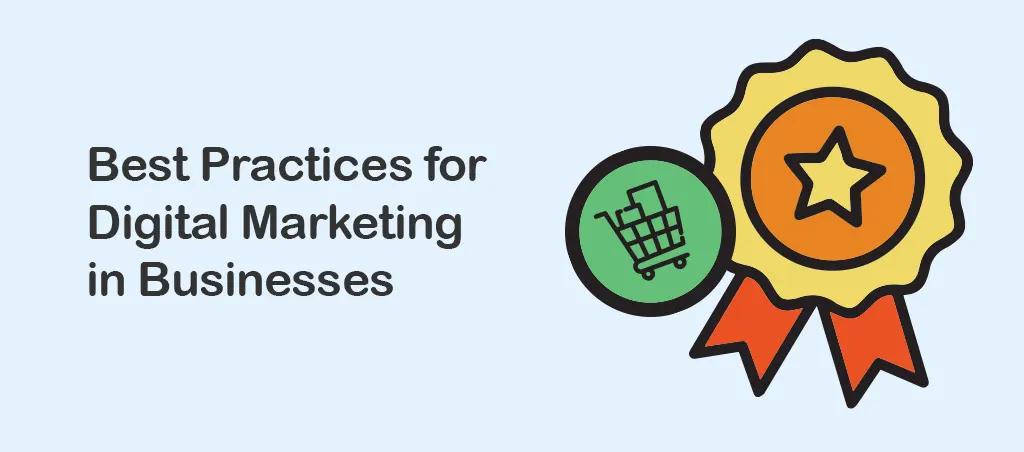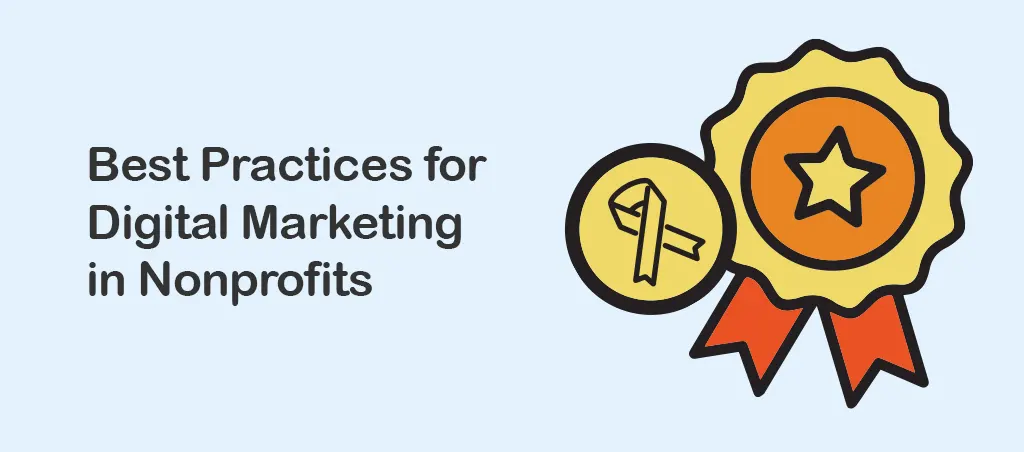
In this digital age, businesses and nonprofits alike are leveraging online platforms and channels to reach and effectively engage with their respective target audiences. Digital marketing is now a critical component of any successful marketing strategy regardless of the nature of your organization.
However, there are distinct differences in approach and implementation of digital marketing strategies for businesses and nonprofits. Let’s explore the similarities and differences between these two sectors, including the best practices for each.
Similarities in Approach

Target Audience: Whether you run a business or manage a nonprofit, you need to fully understand your target audience because this is fundamental to developing a successful digital marketing campaign. Identifying the demographics, interests, and pain points of your specific audience, helps customize the marketing message and content.

Content Marketing: Both businesses and nonprofits benefit from creating valuable, relevant, and compelling content. Establishing authority, building trust, and increasing brand awareness comprise content marketing. Some of the most effective ways of engaging your target audience are blog posts, articles, videos, and social media posts.

Social Media Presence: Establishing a robust social media presence is crucial for businesses and nonprofits. Social media platforms like Instagram, Twitter, or Facebook provide opportunities for direct interaction with the your audiences where you can share updates, and promote products, services, and activities. Attention-grabbing headlines on value-driven posts enable you to build a loyal community around the business or nonprofit.
Differences in Approach

Goals and Objectives: The primary goal of businesses is to generate revenue and achieve profitability. That is why digital marketing efforts focus on increasing sales, generating leads, and retaining customers. Key performance indicators (KPIs) include conversion rates, return on investment (ROI), and customer lifetime value.
For nonprofits, the main objective is to raise awareness about the cause, attract donors, and rally support for their initiatives. Instead of aiming for profitability, digital marketing for nonprofits emphasizes building relationships with supporters, encouraging donations, and attracting volunteers. Key metrics involve donation amounts, donor retention, and the reach of their message.

Call-to-Action (CTA): CTAs in business-oriented digital marketing are typically focused on encouraging and moving a potential customer towards making a purchase, subscribing to a service, or at the very least, filling out a lead generation form.
On the other hand, nonprofits use CTAs to encourage actions like donating, volunteering, signing petitions, or spreading awareness about their cause.

Budget: In most cases, businesses possess heftier marketing budgets than nonprofits; allowing them to invest in various paid advertising channels and influencer marketing to promote their products or services.
Nonprofits, however, are often constrained by limited budgets and usually rely more on organic strategies such as search engine optimization (SEO), email marketing, and social media marketing to achieve their goals.
| ASPECT | BUSINESS | NONPROFIT |
|---|---|---|
| Audience Targeting | Identify demographics, interests, and pain points to tailor the marketing message and content. | Understand the target audience’s interests in the cause to create relevant and engaging content. |
| Content Marketing | Create valuable content to establish authority, build trust, and increase brand awareness. | Promote the cause, share success stories, and raise awareness through compelling content. |
| Social Media Presence | Build a robust social media presence to engage the audience, share updates, and promote products/services. | Establish a strong social media presence to connect with supporters, share updates about the cause, and encourage interaction. |
| Goals and Objectives | Focus on generating revenue, increasing sales, lead generation, and customer retention. | Aim to raise awareness, attract donors, and increase support for the cause. |
| Call-to-Action (CTA) | Encourage actions like purchasing a product/service, subscribing to services, or filling out lead generation forms. | Encourage actions like donating, volunteering, signing petitions, or spreading awareness. |
| Budget Considerations | Often have more substantial marketing budgets, allowing investment in paid advertising and influencer marketing. | Tend to have limited budgets and rely more on organic strategies like SEO and social media marketing. |
Best Practices for Digital Marketing in Businesses

- Design and implement a comprehensive SEO strategy that improves organic visibility in search engines, increases website traffic, and attracts potential customers. Relevant keywords, high-quality content, and a user-friendly website are top priorities.
- Maximize the use of paid advertising campaigns on platforms like Google Ads, Facebook Ads, and Instagram to target specific audiences, drive traffic to your website, and increase conversions. Goals must be clear, ad performance monitored, and the strategy adjusted accordingly.
- Leverage email marketing by building a comprehensive email list and nurturing each of those contacts by engaging with them, promoting products or services, and fostering loyalty. Every email content should be personalized and use automation to streamline the sending process.
Best Practices for Digital Marketing in Nonprofits

- Use compelling storytelling to connect emotionally with the audience and convey the impact of the nonprofit’s work. Share success stories, testimonials, and case studies to illustrate how donations make a difference.
- Foster partnerships by collaborating with other nonprofits, local businesses, or online influencers to broaden the organization’s reach and positively impact people’s lives together.
- Apply for the Google Ad Grants program which provides free advertising on Google’s search results pages. This can significantly increase online visibility and attract potential donors.
Digital marketing is a powerful tool that benefits both businesses and nonprofits. While there are similarities in audience targeting and content marketing; the goals, CTAs, and budget considerations are significantly different between these two sectors.
Understanding these distinctions and implementing best practices tailored to each one harnesses the full potential of digital marketing to achieve their respective goals and drive them to success in their endeavors.

